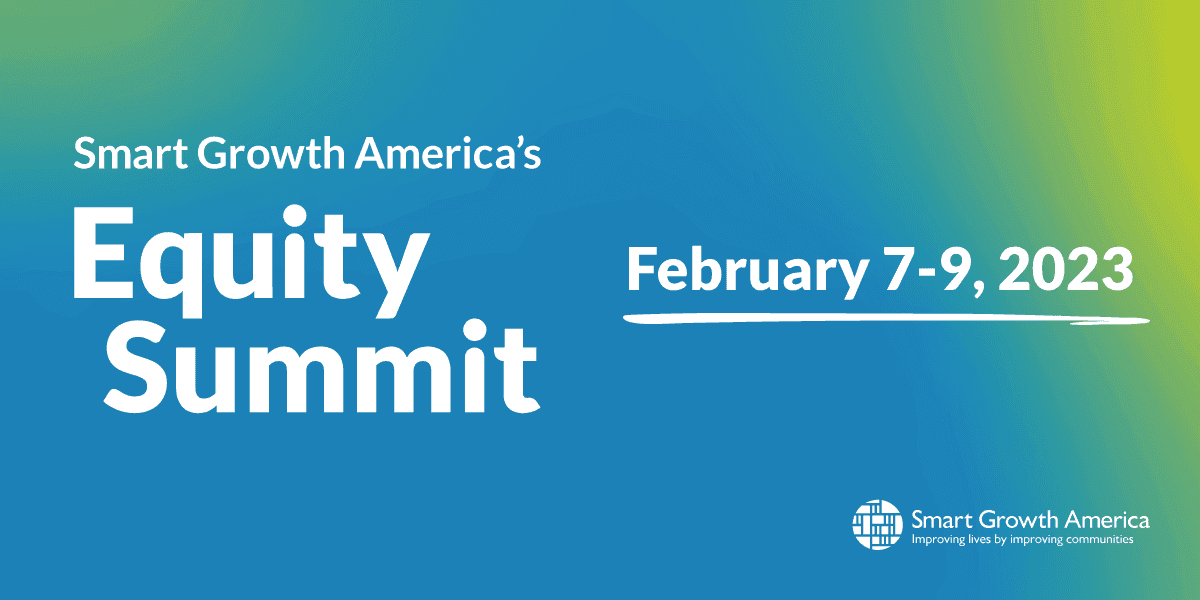
News
By Iman Mekonen, March 8, 2023

Because the Equity Summit is a virtual event, we wanted to find ways to increase engagement and expand on the overarching themes by empowering attendees to further advance racial equity in their personal and professional lives through interactive programming. To create a space for discussion and reflection, and to turn ideas into tangible action steps that can be applied to their own work, we hosted Call-to-Action Breakout Groups.
The Planning Process
The Summit’s purpose has always been to create a space where practitioners, community leaders, and other planners can outline ways to apply a racial equity lens and smart growth principles to their own work. This year, we wanted to invite attendees to further apply lessons learned, but in a collaborative space with peers to brainstorm action plans. We did this by moderating breakout groups and navigating discussions with thoughtful direction.
The Idea Coming into Fruition
Call-to-Action Breakout Group attendees discussed the following questions to help guide their individual Calls-to-Action:
- Which themes or topics from the Equity Summit are most relevant to your work?
- Why did they want to take this extra step, going beyond attending the Equity Summit to join the Call-to-Action Breakout Groups?
- What can I do in my work in smart growth to center and advance racial equity? Where does my sphere of influence lie in my work or community?
- What actions could be broadly applicable to other Summit attendees and inspire changes in their organizations and beyond?
- What next steps can SGA take to support organizations in making these commitments and help further advance racial equity through attendees’ work?
Participants identified barriers in their own work, which led to direct connections over shared experiences. As the conversations developed, they moved from struggles and roadblocks to responding with informed questions, which resulted in potential solutions and Calls-to-Action.
After the first day, SGA staff came together to identify thematic similarities from the three breakout groups. We synthesized notes to create drafts of Call-to-Action statements to present to the group on the second day. We then asked participants to reflect on the Equity Summit in its entirety, review the drafted Calls-to-Action, and analyze discussions from the previous day to craft their own forms of the Calls-to-Action.
After group discussions concluded, participants took the pledge to advance racial equity by responding to the following prompt:
I pledge to advance and center racial equity in my work by:____________
Looking Forward
Take a look at some of the Calls-to-Action created by attendees:
- I pledge to advance and center racial equity in my work by partnering with and centering the needs of community-based organizations representing communities harmed by structural racism.
- I pledge to advance and center racial equity in my work by integrating equity-focused criteria into our agency performance goals. You can’t achieve what you aren’t measuring.
- I pledge to advance and center racial equity in my work by continuing to train my co-workers on environmental and social justice and how it impacts our company, customers, and communities.
We ended our Call-to-Action programming by asking participants what SGA can do to support the group and foster a space to hold both each other and SGA accountable.
Next Steps:
- SGA plans to follow up with the participants in about three months to reflect on the progress of their Calls-to-Action and brainstorm/troubleshoot any barriers they may be facing.
- We plan to showcase participants that are actively implementing their Calls-to-Action.
- In the upcoming months, SGA will release a resource connecting four of the Call-to-Action statements to one of SGA’s programmatic priorities. This will direct the breakout group participants and others who would like to participate in our Call-to-Action pledges to SGA resources, reports, and other projects.
If you’re interested in joining the Call-to-Action movement, please email [email protected] for more information.
Related News

© 2025 Smart Growth America. All rights reserved
Site By3Lane Marketing










